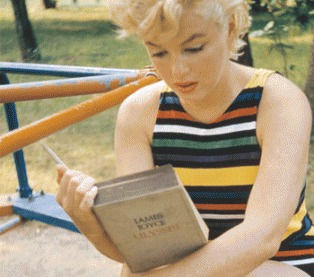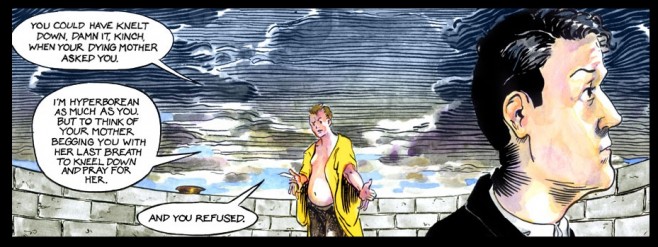
Bloomsday at Thirtytwo Feet Per Second Per Second
[wpcol_1half id=”” class=”” style=””]
“Mr. Bloom stooped and turned over a piece of paper on the strand. He brought it near his eyes and peered. Letter? No. Can’t read…Page of an old copybook.”
On June, 16, 1904, Leopold Bloom stepped out of his house on 7 Eccles St. into the most iconic day in literary history. Today marks the 107th anniversary of Bloomsday, a celebration of James Joyce’s Ulysses and its protagonist’s journey through Dublin. Hundreds of thousands of people will convene the world over to engage in 24 hours of Joycean revelry. But why? What’s the point of celebrating a book most people are afraid to read and that the author himself stated would keep professors busy for a century?
The answer is simple. Joyce demanded that his readers devote their whole life to reading his works, and that’s exactly what we’ve done.
Bloomsday embodies [academic] Geek Culture. With Ulysses, Joyce grounded a universe and solidified a mythology, thus giving rise to legions of students qua fanboys who have spent years immersed in enigmas. At first glance it may seem problematic, if not pejorative, to view devotees of such a thunderous novel as Ulysses in the same light as those obsessed with Batman, Star Trek or any other facet of the Geek Canon, but a brief detour through the work of another may prove that the worlds are not as far apart as one might want to believe.

The Lord of the Rings is suspended perfectly between the scholarly and the fantastic. On the one hand it is wholly academic, a tour de force of historic, socio-religious commentary and linguistic innovation. On the other it is a book about little people with big feet trying to destroy a ring that makes people invisible. Beginning with The Hobbit, Tolkien established a mythology that
[/wpcol_1half] [wpcol_1half_end id=”” class=”” style=””]
would grow both imaginatively and intellectually. Like Joyce, his manipulation and invention of language is largely unparalleled and the ability to transition that into good storytelling transcends the assumed trappings of “Fantasy.” And good storytelling is the key. Tolkien presents a formulaically sound narrative that begins with a viable origin story from which his characters and universe evolve.
Sound familiar? It is the model by which any good comic or work of science fiction or fantasy is judged. That being said, its scholarly merit is boundless. But what if we shift the paradigm and examine the academic through the lens of the fantastic?
[pullquote]With Ulysses, Joyce grounded a universe and solidified a mythology, thus giving rise to legions of students qua fanboys who have spent years immersed in enigmas[/pullquote]
The key to approaching Joyce is to read chronologically. Dubliners introduces his universe, a Dublin that is very much alive and engaged with the characters that populate her [characters that return throughout his Canon], and should be considered a genesis of sorts [or, if I may, his Silmarillion]. From there, A Portrait of the Artist as a Young Man presents the origin story of his hero, Stephen Dedalus. With universe and hero established, the reader is prepared to enter Ulysses. Truly an adventure story, it is a world of secrets, a coded journey – its Homeric parallels merely an entryway into a robust world of language, experience and the self. The key to unlocking Ulysses is familiarity with the Joycean mythos. Following its characters, subtle enigmas and puzzles begin to unveil themselves, each chapter a new road rife with riddles, danger and most of all fun.
And it’s fun that is the focal point of Bloomsday. Far from being a day of intellectual grandstanding, it is truly a gathering of the geeks lost in an alternate [albeit academic] universe of language. The only difference – our dungeon master is a librarian.
———-
The elegant Latin poet has handed down to us in the pages of his Metamorphosis Peter’s twitter feed.
[/wpcol_1half_end]





